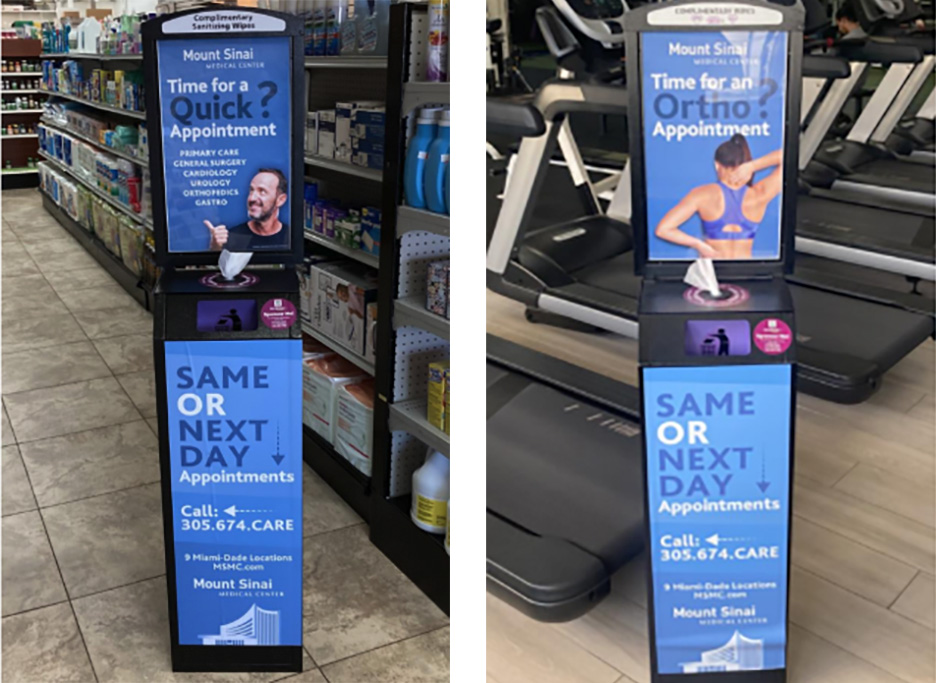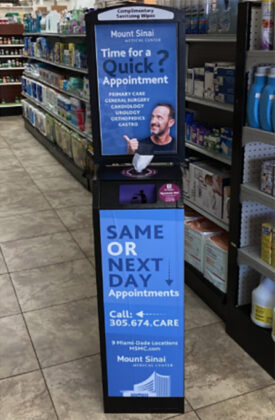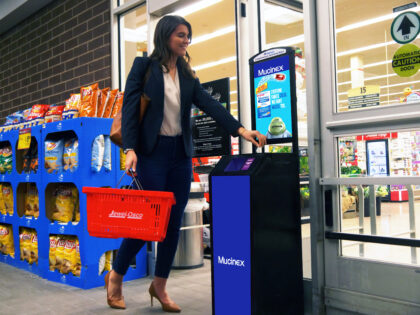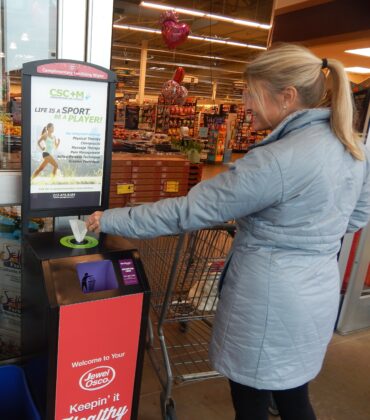In our increasingly competitive world, even small hospitals are expanding their marketing efforts. Effective advertising strategies allow hospitals to connect with their community, foster credibility, and build brand recognition. Let’s take a look at some examples and break down how to conduct a successful hospital advertising campaign.
How to Advertise a Hospital Effectively
Target the right audience
Healthcare industry advertisements won’t be of interest to everyone, such as healthy twenty-year-olds. To ensure your advertising impressions aren’t wasted on disinterested consumers, you’ve got to nail down a clear picture of your target audience!
The platforms and advertising content used by pediatricians, general hospitals, dermatologists, and primary care clinics all differ greatly because of the different groups they are trying to target. This is why it is so important to know your consumer base well before moving on to the next steps.
Select the best medium
Once we’ve formed a clear picture of our target audience, we need to select the correct channel to use, whether that’s billboards, wellness kiosks, or online advertising. Each advertising medium comes with its own unique benefits that make it superior in targeting different groups of people.
An online advertising campaign for a geriatric care center won’t have much success, but a campaign that uses sanitizing billboards in pharmacy waiting areas will. You must think about what medium your consumer base is comfortable using and where they are likely to be.
Create consumer interest
Now that you have the correct audience in mind and a medium selected, it’s time to consider what should be featured on your ads. We want to deliver a simple and concise message that can communicate the unique value of your hospital in just a few seconds. This can be accomplished in a couple of different ways.
One way to approach showing your hospital’s value is to advertise what sets you apart from the competition, such as a new facility with advanced technology or awards you’ve received in patient care. Another approach is to promote one of your success stories. By featuring an exceptional patient recovery story, you can appeal to consumers’ emotions and make them trust you with their health concerns.
Why Should Hospitals Advertise?
Telehealth saw a big rise during the pandemic, but it has quickly fallen off as consumers have turned back to in-person care. However, these consumers have increasing expectations for high quality medical services and hospitals find themselves struggling to attract and retain patients. Many facilities have had to re-think their healthcare marketing strategies.
Advertising is a key factor in driving up patient numbers for both small and large hospitals. Small hospitals rely on advertising to boost their recognition and credibility within their local communities. Similarly, large hospitals use advertising to differentiate themselves from the fierce competition they face.
Best Strategies To Promote A Small Hospital
Wellness Billboards
One of the best strategies to promote a small hospital is to find cost-effective displays for your ads that align with healthcare messaging. Wellness billboards located in supermarkets, drug stores, fitness centers and other local venues are ideal to execute this strategy because they offer hand sanitizing wipes to appeal to health conscious consumers and are affordable.
Terraboost is an innovator in the marketing industry with our sanitizing billboards that are located in thousands of locations, such as the pharmacy wait areas of drug stores like CVS and Walgreens and the storefronts of supermarkets like Acme and Giant. These wellness billboards have a proven success record with 80% of in-store consumers taking a wipe and 94% of people having a positive opinion of the company sponsoring the sanitizing station.
Studies have shown that appealing to one or more of the five senses drives consumer engagement with advertising. So, it’s no wonder that wellness billboards that display eye-catching ads and offer sanitizing wipes are so successful.
TV Ads
TV ads are great if you are looking to increase general public awareness of your hospital and grab the attention of a diverse population within a specific geographic region. These ads can generate impressive customer conversion if they feature emotional storytelling, like the success story of a child battling cancer.
A marketing strategy that primarily utilizes TV ads can vary greatly depending on the size of your hospital, the scope of your target audience, and your budget. A TV ad campaign that purchases air time for just a few days and only targets a small geographic region may only cost between $1,500-$30,000. However, national TV ad campaigns that run for multiple months can be extremely expensive and cost $10M+.
Community Outreach
Small hospitals can see an impressive boost in brand recognition and credibility through local community outreach. Plus, this form of marketing won’t cost much aside from time and labor.
Here are some of the top forms of community outreach utilized by small hospitals:
- Health screenings and check-ups: Hospitals can get to know a wide array of community members via discounted or free health screenings, check-ups, and diagnostic tests. These health screenings could involve simple blood pressure checks or more intensive cancer screenings.
- Health Education Workshops: These workshops generally occur in places like public schools or senior care facilities and feature seminars on preventative care, healthy lifestyle choices, or chronic disease management. This form of outreach helps to promote your hospital as an active and caring member of the community.
- Partner with a local nonprofit: For this form of community outreach, it’s important to select a nonprofit group that aligns with healthcare messaging, or even better, your hospital’s specialty. Your hospital can aid a nonprofit group by donating medical supplies, helping organize a charity event, or by providing educational resources to their members.
Direct Mail Campaigns
Direct mail campaigns are particularly versatile as you can send out various marketing materials such as letters, brochures, flyers, and postcards. Plus, direct mail campaigns seem to work for just about every age demographic. A recent study found that 90% of direct mail is opened and that 75% of millennials report that they enjoy receiving direct mail.
The cost of a direct mail campaign generally ranges from $.30 to over $10 a person depending on how much you put into the design, marketing copy, mailing lists, and printing. While these costs can be quite stiff, healthcare direct mail ads are known to generate an ROI of approximately 30%.
Pay-Per-Click Ads
With pay-per-click ads, you only pay when the ad is selected by a targeted audience. To successfully conduct a pay-per-click ad campaign, you’ll want to identify keywords that a member of your target audience would search. When someone searches a term from your keyword list, the ad will be displayed on search engines and websites to direct consumers to your website.
As healthcare professionals know too well, people have a predilection to research their real or imagined health conditions on the internet. While this can be an annoyance for healthcare facilities as patients come in with inaccurate self-diagnoses, online ads can easily target those concerned about their health by incorporating user data in their campaigns.
Examples Of Advertisements For Hospitals
New York Presbyterian Hospital’s Patient Stories

This print ad campaign showcased how doctors and nurses supported patients through dire circumstances. The emotional nature of these ad campaigns engaged consumers and inspired them to place their trust in the New York Presbyterian Hospital to similarly help them through their times of need. This ad campaign was also paired with a portion of the hospital’s website that featured the entire collection of these patient stories.
Mount Sinai Medical Center’s Wellness Billboards

Combining ad messaging with location delivers a more contextual and powerful message to consumers because the advertising connects with what they are doing at the moment.
Mt. Sinai Medical Center used wellness billboards placed in supermarkets, pharmacies, and fitness centers located in key neighborhoods in the Miami area to drive awareness of their same day appointment and their orthopedic services. By aligning their brand with wellness billboards offering sanitizing wipes, Mt. Sinai reinforces its commitment to health and wellness in the community.
Banner Health’s Infographics

A sure way to boost credibility in your community is to be seen as a trusted educator. Banner Health used digital advertising to push out their infographics on wellness, nutrition, and mental health. To increase their number of impressions, Banner Health provided links to make these infographics easy to share across all social media platforms.
Medspring Urgent Care’s Out-Of-Home Advertising

With the worst of the pandemic over, advertisers are turning back to out-of-home advertising campaigns to reach consumers while they are outside and engaging with their surroundings.
This MedSpring advertising campaign featured posters in neighborhoods where their clinics were located and is a great example of how to drive engagement at the local level. Another unique tactic used by MedSpring was to feature bright colors and happy imagery to negate some of the negative connotations people have with seeing a doctor.
Is TV Advertising Worth It?
TV advertising can be effective, but only for hospitals that have a relatively large budget and are aware of the various downsides. Let’s take a look at some of the pros and cons of TV advertising.
Pros
- Mass Marketing: Television ads cast a wide net and excel at generating widespread awareness of your hospital.
- Emotional Impact: Hospital television ads most commonly feature heart wrenching stories that leave an emotional impact on viewers. These ads foster trust and can showcase your patient care facilities that have saved lives.
- Increased Perceived Quality: Most consumers associate brands that advertise on television with high levels of professionalism since these brands have put extensive time into production and have the financial resources to purchase ad space.
Cons
- High Cost: To put the costs of an extensive TV marketing campaign into perspective, The Cancer Treatment Centers of America aired an ad that appeared 8,600 times and cost the company $11.8M. You can drastically reduce these costs, but you’ll have to air the ad for a limited amount of time and significantly restrict its geographic reach.
- Limited Targeting: TV ads can be targeted to specific regions, but that is the extent of their targeting capabilities. Alternatively, in-store digital ad space owners collect a ton of data so that you can feature your ads when the correct contextual conditions are met such as audience demographics, weather, and time of day.
- Inability to Track Results: Tracking consumer engagement with your ads is especially hard with the TV medium since it is likely that viewers are multitasking or away from the screen when ads are featured. So, it is tricky to measure the direct correlation between the TV ad and patient acquisition.
If you’re looking for a far more targeted approach to advertising and at a more affordable rate, Terraboost’s wellness billboards may be a better option for your hospital. By featuring ads on our wellness billboards in stores near your hospital, you can still reach your local community and do so through a more engaging medium than television ads.
Finding the correct path forward in a marketing campaign can be difficult. If you aren’t sure where your ads should be featured, we at Terraboost are leaders in the marketing industry and can provide you with guidance and a free personalized quote.
We have over 120,000 displays located in big name stores like CVS, Walgreens, Acme, and even mall networks like Simon Malls. Through our network of wellness billboards, we reach 130M consumers daily with up to 80% engagement.



